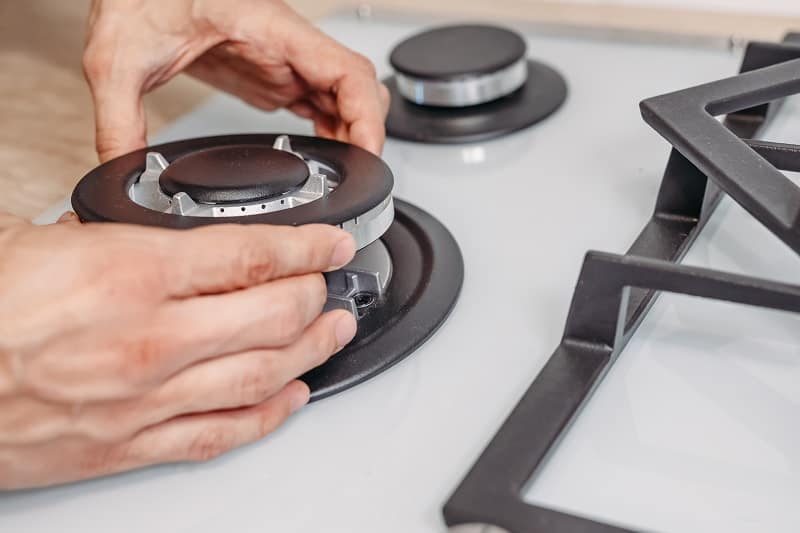With a pressure cooker, you can make quick, budget-friendly meals that are also healthy. Pressure cooking is an ancient yet dependable technique .The healthy pressure cooker recipes for thick meat, dense veggies, hard beans, and other problematic foods.
Pressure-Cooker Buddha Bowl (pictured)
After a hard day at work, the last thing you want to do is spend hours in the oven preparing a massive pot roast. What if you didn’t soak those beans in time for dinner? Preparing dishes like a beef roast and home-cooked beans is traditionally a weekend-only affair, taking hours of free time. So you reasoned. With the aid of a pressure cooker, you can transform weekend dinners into weekday solutions, saving time and streamlining dinner prep.
Read More: The 3 Best Multicookers on the Market
Multicooker is a kind of pressure cooker.
Since their peak in the 1940s and 1950s, pressure cookers have come a long way. Modern stovetop pressure cookers include several safety measures, including a lid-locking mechanism that prevents the lid from being removed while the pot is under pressure. Pressure cookers with spring-valve pressure regulators are newer models that are quiet, streamlined, and safe.
The electric pressure cooker and multicooker have been game-changers in recent years. Popular products like the Instant Pot have brought pressure cooking into the mainstream with its simple, safe operation and hands-off cooking. Pop the lid on and push a few buttons to get started. The remainder is taken care of by the cooker. Electric cookers work at a slightly lower pressure level than their stovetop equivalents. Thus cook times are significantly longer.
Pressure-Cooker Chicken with Rice (shown) (Arroz con Pollo)
The steam is trapped within the sealed pot in a pressure cooker. The air pressure rises, as a result, raising the boiling temperature of the water. Consequently, instead of cooking food at 212°F (assuming you live at sea level), you cook it at 250°F, which results in much shorter cooking periods without the need for unpleasant boiling.
This also equates to significant energy savings. According to manufacturers, a pressure cooker may help you green your kitchen by saving up to 50% to 80% of energy, depending on the type of food and cooker.
Using a Pressure Cooker to Make Gluten-Free Pressure-Cooker Macaroni and Cheese
Gluten-Free Pressure-Cooker Mac & Cheese (shown)
- Modern pressure cooking is safer than ever, more energy-efficient, and hands-free cooking saves time and work. However, the proper use of the cookers requires some skill. The following are the fundamental instructions for using your pressure cooker (electric or stovetop).
- Carefully read the instructions on your pressure cooker. Don’t miss this step, no matter how tempting it seems.
- Before you start cooking, double-check that everything is in order. A clean and dry inner pot lies within an electric pressure cooker and should only put food in the inner pot. The gasket, a silicone ring that clicks into the lid, should be clean and well-fitting. Clean the inside section of the lid rim, the outside perimeter of the pot, and the valve on stovetop pressure cookers. Make that the gasket is pliable and not dried out; if required, replace it.
- Fill your pressure cooker halfway with the ingredients. Fill the oven to no more than two-thirds full (or half full for foods that may froth, e.g., beans and grains, or dishes that are mostly liquid and require a quick release).
- Close the lid and secure it. Check that the pressure release valve on your electric pressure cooker is closed.
- Skip stepping six after programming your pressure level and cooking time into your electric pressure cooker.
Bring the saucepan to high pressure on the stovetop for pressure cookers. It’s critical to reduce the heat as soon as the pressure cooker achieves high pressure. The dish may get overdone if kept in a high heat setting. Use the two-burner approach if you’re using an electric stove: Heat a second burner to medium-low or low heat while the cooker comes to high pressure over high heat. Move the oven to the double burner when it achieves high pressure and keeps it just hot enough to maintain high pressure.
- Let go of the tension. After the cooking is complete, the pressure must be released before the lid may be removed. There are a few alternatives available to you:
- Natural Expansion: This approach is best for foamy, high-liquid dishes, as well as large portions of meat and other items that don’t need to be cooked thoroughly. Let the cooker alone and allow the pressure to release gradually. Depending on your cook duration and how filled your oven is, this procedure might take anywhere from 5 to 20 minutes or more.
- Quick Release: This approach is best for items that cook quickly, such as certain vegetables and shellfish, or for staggering ingredients, such as adding a vegetable halfway through a stew. Once the cooking is finished, push or crank the steam release valve on both kinds of cookers to release the steam. Move your hand and other body parts out of the moisture line as soon as possible, and don’t place the cooker beneath cabinets or other impediments. Avoid rapid release when cooking frothy meals or liquid items that fill the cooker halfway or more. These foods may block the valve and cause heated liquid to fly out.
- Cold-Water Release: This is the quickest way for stovetop pressure cookers and a suitable choice when you need to halt the cooking immediately. This approach should not be used with electric pressure cookers since you risk electrocution. Place the pressure cooker in the sink if using a stovetop type. Hold the cooker at an angle and pour cold water over the outside edge of the lid, allowing it to drip down the sides and over the cover. Allowing water to stream straight over the vent or valve is not recommended.
